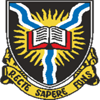ITP academic credit units
Table 1 below indicates the levels of industrial training and their corresponding academic credit units.
S/N | Programme | Industrial Training Programme | Course Code | No. of Units |
1. | Technology (All Departments | SWEP | TIT 299 | 2 |
SIWES | TIT 399 | 3 |
SIWES | TIT 499 | 6 |
2. | Agric. & Forestry (All Departments) | SIWES | AIT 499 | 6 |
3. | Faculty of Science (All Departments) | SIWES | SIT 399 | 3 |
SIT 499 | 5 |
4. | Pharmacy | SIWES | PIT 399 | 3 |
PIT 499 | 3 |
5. | Geography | SIWES | GIT 399 | 3 |
6. | LARIS | SIWES | LIT 399 | 3 |
7. | Nursing | SIWES | NIT 399 | 3 |
NIT 499 | 6 |
Objectives of Industrial Training
- Provide an avenue for students in institutions of higher learning to acquire industrial skills and experience in their course of study, which are restricted to Engineering and Technology including Environmental studies and other courses that may be approved by National Universities Commission (NUC).
- Prepare students for the industrial work situation they are to meet after graduation.
- Expose students to work methods and techniques in handling equipment and machineries that may not be available in their institutions.
- Make the transition from school to the world of work easier, and enhance students contacts for later job placement;
- Provide students with an opportunity to apply their knowledge in real work situation thereby bridging the gap between theory and practice; and
- Enlist and strengthen employers’ involvement in the entire educational process and prepare students for employability in industry and commerce.
